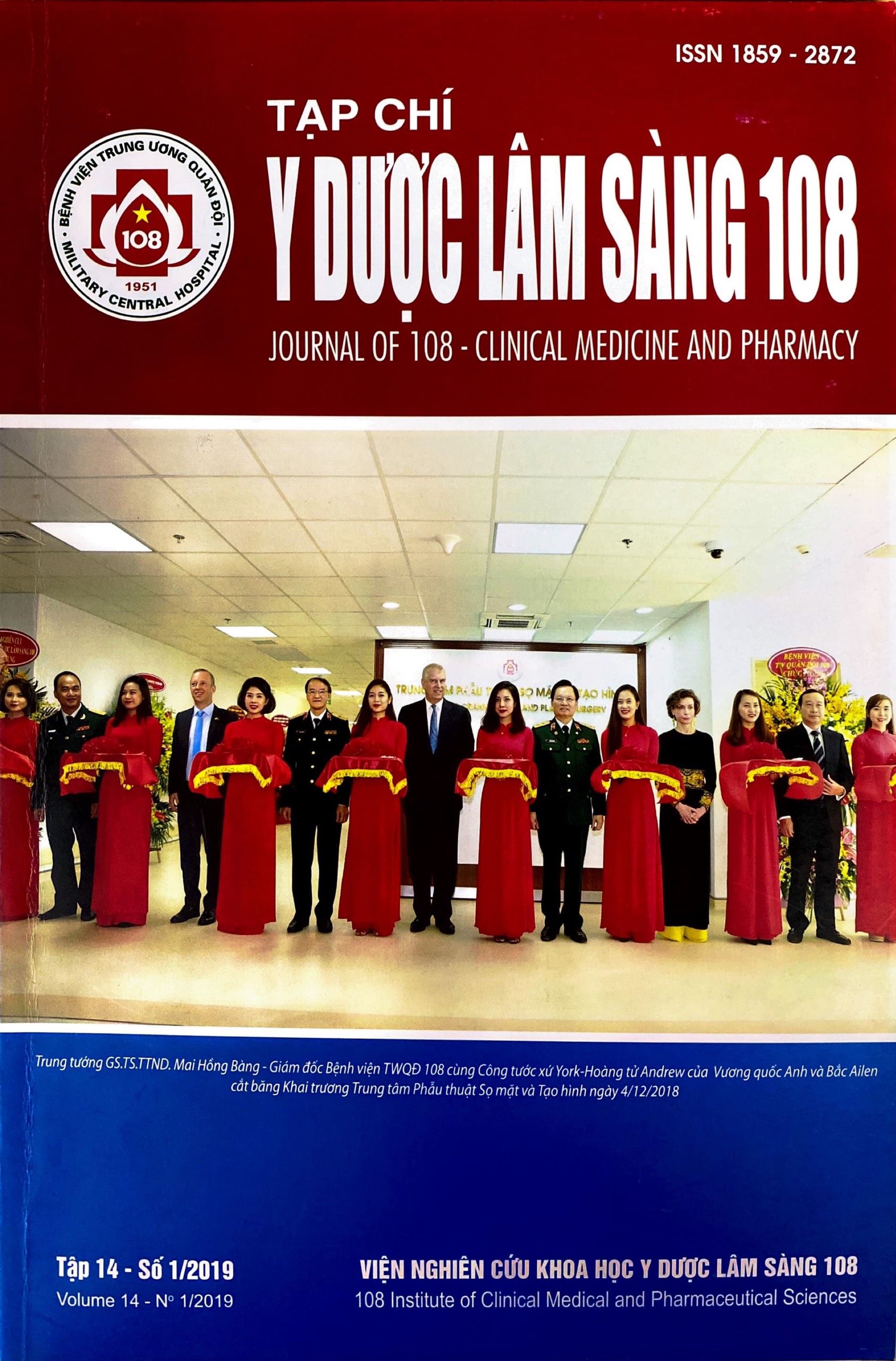Study some characteristics of electromyography of the median nerve of carpal tunnel syndrome
Main Article Content
Keywords
Abstract
Objective: To describe and evaluate some characteristics of electromyography (EMG) of the median nerve of carpal tunnel syndrome. Subject and method: The study was conducted on 30 patients diagnosed with carpal tunnel syndrome by symptoms clinic and EMG at the Hanoi Medical University Hospital by Neurologist. Result: In the research group: The reduction of sensory transmission speed was 90%. 86.7% had a prolonged sensory latency. Reducing the amplitude of sensory response meets 80%. Meanwhile, prolonged motor latency was 33.3%. The motor transmission speed was 40%. Reduce the amplitude of motor response 86.7%. In the carpal tunnel syndrome, the medium sensory latency of the median nerve was 3.08 ± 0.52ms and last longer than normal (2.82 ± 0.583ms) with statistical significance with p=0.019 < 0.05. The medium of sensory transmission speed in the hand was 37.4 ± 5.71m/s less than the normal hand (40.78 ± 7.63m/s) with statistical significance with p=0.029 < 0.05. Other indicators do not see any significant difference. Conclusion: In carpal tunnel syndrome: The most common is reducing of sensory transmission speed (90%), prolonging the sensory latency time by 86.7%, reducing the 80% sensory response amplitude. The patient's side with the normal side, the average indices of abnormal EMG changes of the medium nerve of sensory fiber have a statistically significant difference.
Article Details
References
2. American Academy of Orthopaedic Surgeons (2007) Clinical practice guideline on the diagnosis of carpal tunnel syndrom.
3. Gelberman RH, Hergenroeder PT, Hargens AR, Lundborg GN, Akeson WH (1981) The carpal tunnel syndrome. A study of carpal canal pressures. J Bone Joint Surg Am 63(3): 380-383.
4. Dawson DM, Hallet M, Wilbourn AJ (1999) Carpal tunnel syndrome. Entrapment neuropathies. 3rd ed. Lippincott – Raven: 20-94.
5. Stevens JC, Sun S, Beard CM, O’Fallon WM, Kurland LT (1961) Carpal tunnel syndrome in Rochester. Minnesota, 1961 to 1980. Neurology 38: 134-138.
6. Bland JDP, Rudolfer MS (2003) Clinical surveillance of carpal tunnel syndrome in tow areas of the United Kingdom, 1991 - 2001. Journal of Neurology, Neurosurgery and Psychiatry 74: 1674-1679.
7. Kouyoumdjian JA et al (2002) Evaluation of age, body mass index and wrist index as risk factor of Carpal tunnel syndrome severity muscle nerve. Muscle Nerve. 25(1): 93-97.
8. Rossignol M, Stock S, Patry L, Armstrong B (1997) Carpal tunnel syndrome: What is attributable to work? The Montreal study. Occupational and Environmental Medicine 54: 519-523.
9. Bagatur AE, Zorer G (2001) The carpal tunnel syndrome is a bilateral disorder. J bone Joint Surg 83-B: 665-668.
10. Nora DB, Becker J, Ehlers JA, Gomes I (2004) Clinical features of 1039 patients with neurophysiological diagnosis carpal tunnel syndrome. Clin Neurol Neurosurg 107(1): 64-69.
 ISSN: 1859 - 2872
ISSN: 1859 - 2872
